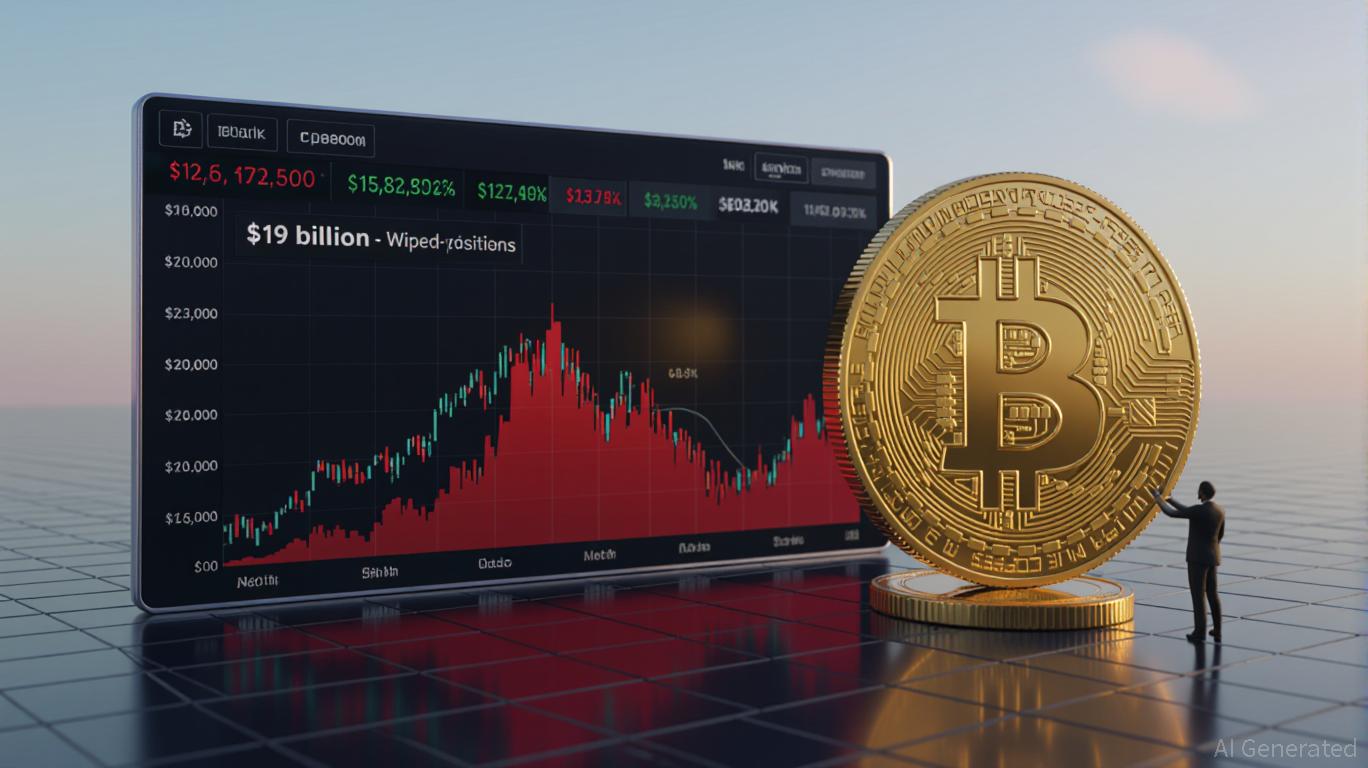ICP Jumps 30% Following Significant Network Update and Increased Institutional Interest
- Internet Computer (ICP) surged 30% in Q3 2025 due to network upgrades, institutional adoption, and AI-driven innovations like Caffeine. - Strategic partnerships with Microsoft Azure and Google Cloud boosted infrastructure scalability, while TVL grew 22.5% to $1.14B amid 2,000 new developers. - Compute capacity rose 50%, but dApp engagement fell 22.4%, highlighting tensions between technical progress and user adoption. - Speculative trading spiked 261%, raising concerns about overvaluation, while regulato
Network Upgrades and Technical Advancements
The

Institutional Adoption and Market Dynamics
Importantly, ICP’s governance model—which focuses on decentralization and openness—
Performance Metrics and Challenges
Despite these strengths, ICP’s Q3 results present a mixed picture. Although computing resources grew by 50%,
DeFi transaction activity grew by just 15% in Q3 2025,
Long-Term Investment Implications
ICP’s recent surge marks a crucial juncture for blockchain infrastructure, as institutional involvement and AI integration redefine its value. For those considering long-term positions, the main factors to evaluate include:
1. Endurance of Institutional Interest: The increases in TVL and developer participation point to solid momentum, but dependence on speculative trading could introduce instability.
2. Ability to Withstand Regulation: Ongoing SEC examination of deflationary mechanisms and governance may require ICP to revise its approach, potentially affecting its token model.
3. Development of the Ecosystem: The reduction in dApp activity signals a need for ICP to balance enterprise collaborations with innovations that engage users, to prevent it from becoming solely an infrastructure provider.
To sum up, ICP’s 30% price jump highlights its strong position in the AI-driven and institutional blockchain sector. Still, investors should carefully consider the advantages of its enterprise-level infrastructure alongside the risks of speculative bubbles and regulatory shifts. Those with a long-term perspective may find ICP attractive, provided the platform can successfully connect its technical progress with widespread, practical adoption.
Disclaimer: The content of this article solely reflects the author's opinion and does not represent the platform in any capacity. This article is not intended to serve as a reference for making investment decisions.
You may also like
Bolivia eyes crypto and stablecoins to fight inflation and US dollar shortage

COTI and Houdini Swap Integrate Privacy and Regulatory Compliance to Support Institutional Blockchain Integration
- COTI partners with Houdini Swap to enable confidential cross-chain swaps, preserving user privacy while maintaining regulatory compliance for institutional adoption. - The integration uses non-custodial architecture and split-transaction routing to obscure sender-receiver links while allowing KYT checks on regulated exchanges. - COTI's Garbled Circuits infrastructure supports enterprise-grade privacy, enabling full lifecycle compliance from asset swaps to DeFi interactions without data exposure. - With $

XRP News Update: XRP ETF Momentum and Institutional Interest Face Off Against Technical Challenges in $15.5 Trillion Pursuit
- XRP gains traction via spot ETF approvals and institutional adoption, unlocking a $15.5T market potential as Ripple expands into prime brokerage and cross-border payments. - SEC-approved ETFs from Bitwise, 21Shares, and Grayscale attract $645M in AUM, offering investors regulated access to XRP with fees ranging from 0.34% to 1.89%. - Ripple's $1.25B acquisition of Hidden Road (Ripple Prime) enhances XRP's utility as collateral for $3T in annual settlements, boosting institutional liquidity and adoption.
Bitcoin Leverage Liquidations: Potential Impact on Institutional Involvement in 2025
- 2025 crypto market saw $19B in Bitcoin liquidations after October 10 crash, slashing prices from $126k to $82k amid 70% long-position collapses. - 1,001:1 leverage ratios and 78% perpetual futures dominance created self-reinforcing sell-offs, exposing systemic risks in hyper-leveraged derivatives. - Fed rate hikes and the GENIUS Act's stablecoin rules intensified volatility, forcing institutions to adopt AIFM risk models and RWA diversification. - Post-crisis reforms show $73.59B in crypto-collateralized
